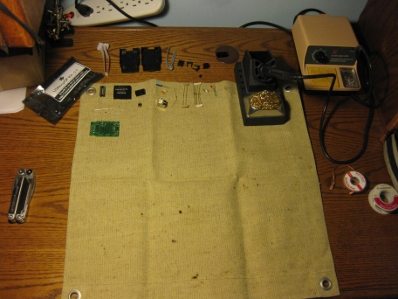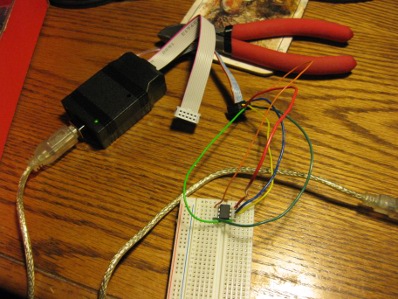My extra timesink for the surrounding few weeks has been helping out with UK’s IEEE Southeastcon Competition Robot.
I spent a lot of time last semester making a never-quite-working (but very educational) vision system as a senior project; we opted not to use it (the “never-quite-working part) a few weeks ago, but the rest of the robot isn’t (wasn’t?) really in order to compete, so there have been lots of little things to take care of. This year’s robot “recycles,” it has 4 minutes to gather Coca-Cola empties (conference is in Atlanta, GA this year, of course its Coke) off of a 10×10 astroturf field, and sort them by material (glass, aluminum, plastic). Full rules are available here. The current state of the robot looks as follows, and has at least a rough software framework to drive the pictured hardware.

I don’t have an awful lot of time to dedicate to it, so I’ve been trying to take care of little things; soldering jobs, little pieces of glue code to make the software work, passing information around the group to make sure everyone stays synchronized. Hopefully it’s been useful. Indications are that there will be a reasonably competitive robot in a week, there has been a lot of a lot of people’s time and effort (not to mention a fair chunk of the UK IEEE Student Branch’s money) invested in this year’s robot, so I certainly hope so. I may even get all the OTHER things that the time spent on the robot and going to the conference proper is pulling time away from.
Web Presence
Page Navigation
Meta
-
Recent Posts
Random Quote
For O passionately loved to see faces enveloped in that mist which makes them so young and smooth, a timeless youth that does not restore childhood but enlarges the lips, widens the eyes the way make-up does, and renders the iris sparkling and clear.
— Pauline Réage, The Story of OCategories
License

Unless otherwise noted, this work is licensed under a Creative Commons Attribution-ShareAlike 3.0 United States License.




